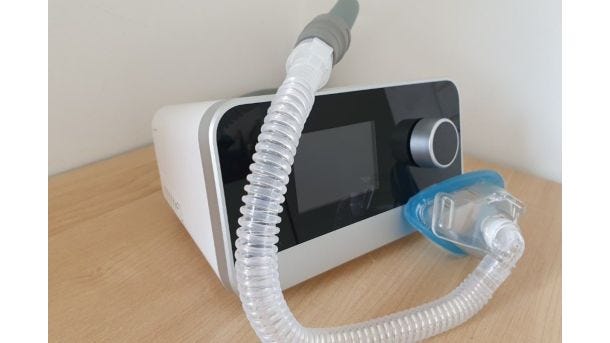Best Practices for Using A CPAP Machine
Using a continuous positive airway pressure (CPAP) to treat obstructive sleep apnea (OSA) keeps air passages open, making breathing easier. However, a large percentage of people who purchase CPAP machines stop using them, despite the obvious benefits. There are many common problems that patients experience while using the device, and most have simple solutions.
Using a CPAP Machine - Stuffy Nose Problem
Stuffy noses are one of the most common side effects of using a CPAP machine. To treat a stuffy nose, follow these steps.
- Spray a saline nasal spray 6 to 8 times in each nostril before using the CPAP machine. You can purchase this spray in a drug store or make it yourself by measuring one-quarter teaspoon of salt into one cup of boiled or distilled water, filling a clean nasal spray bottle or using a bulb syringe. You can also try using a nasal decongestant, but you should check with your doctor first.
- Many CPAP machines come with a humidifier that adds moisture to the forced air, which should reduce nasal congestion.
- Make sure to clean the mask and tubing every day; it only takes a few minutes to use a Citrus mask wipe or spray. In addition to daily cleanings, you should thoroughly wash the mask and tubing with soap and hot water, even using some rubbing alcohol periodically to disinfect the tubing. If, at any time, the tubing begins to leak during the cleaning, it is a sign that the tubing should be replaced. Also, you should check the condition of your mask cushions to see if they need to be replaced.
Using a CPAP Machine - Starting CPAP Therapy
When you first start using the CPAP machine, you may feel that the air pressure in your mask is too strong. This is a very common problem, and there are a few steps to take to reduce the feeling.
- Never reduce the CPAP air pressure setting without first consulting your doctor. Reducing the air pressure in your CPAP device can potentially lower your oxygen intake and result in serious health issues.
- An easy way to acclimate yourself to the new machine is to use it while you are awake. You can set the “ramp” at a low level of pressure and the device will automatically raise the air pressure at a gradual rate. Using the device while reading or watching television should help you to get comfortable to the increase in air pressure.
Sometimes people who use CPAP machines wake up with a sore throat. This may be the result of breathing through your mouth while you are asleep. To help keep your mouth closed while you sleep, you may want to attach a chin strap to your mask, or you may want to get a full-face mask that covers your nose and mouth, and turn on the humidifier so that the air going through your throat is moist. In addition, another thing that might help with your sore throat is to make sure to use the filters on your CPAP machine.
Using a CPAP Machine - CPAP Maintenance
The filters on your CPAP machine not only prolong the life of the machine but also remove irritants from the air that could potentially go down your throat. Your machine probably has both foam and ultra-fine filters, and you should check them regularly to make sure they are clean. Foam filters should be washed once per week and should be replaced after 6 months of use. Ultra-fine filters, however, cannot be reused and need to be replaced every 2 weeks.
Another maintenance task you should perform on your CPAP machine is to check the air pressure with a manometer every six months. This will ensure that the pressure reading on the machine is accurate.
Using a CPAP Machine - CPAP Mask Fits
Another common problem with CPAP machines is air leaking out of the mask, which can result in red eyes, snoring, and the risk of cessation of breathing. If this is the case, you can try the following tips to help solve the problem:
- Adjust the straps on your mask so that the fit is better.
- Regularly check the condition of both your mask and your cushions. It is recommended to purchase a new mask or new cushions every 3 to 6 months, or as necessary because of wear and tear.
- Try a different type of mask or different nasal pillows; some masks will mold better to the shape of your face.
- Talk to your doctor and CPAP supplier until you find the correct fit.
For more information on CPAP mask troubleshooting, refer to our blog on CPAP Masks Making Noise During Therapy.
Another indication of an incorrectly fitting mask is the appearance of red or sore spots on your face from the straps. Loosening the straps on the mask can alleviate the discomfort, but you must make sure that the mask is still tight enough to prevent leaking. Another method available to you is to use pads to cover the straps, which will prevent chaffing. If neither of these solutions solves your problem, you may want to consider trying a different type of mask. If you decide to purchase a new mask, you should speak to your CPAP provider about the problem; they will be able to offer you suggestions.




